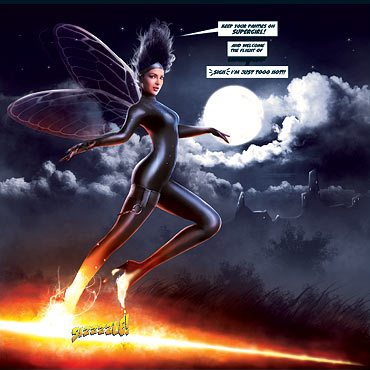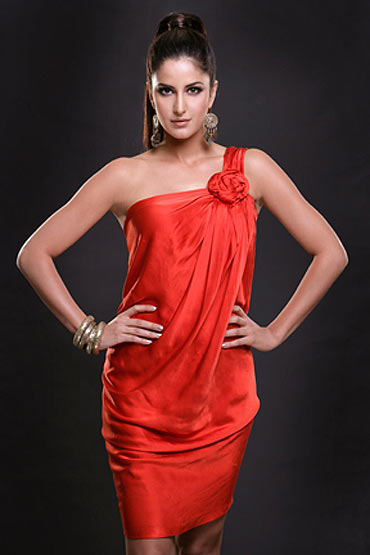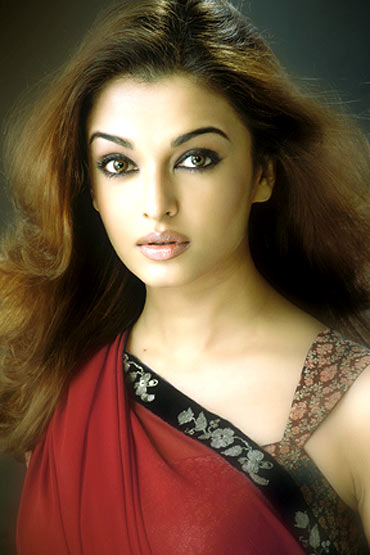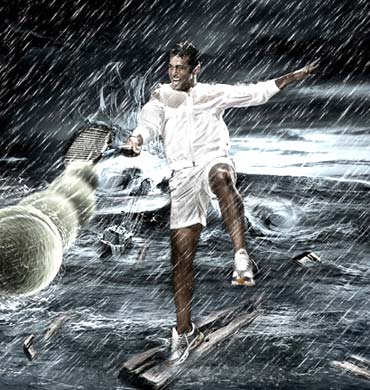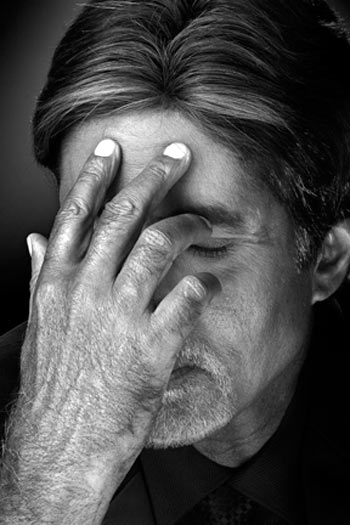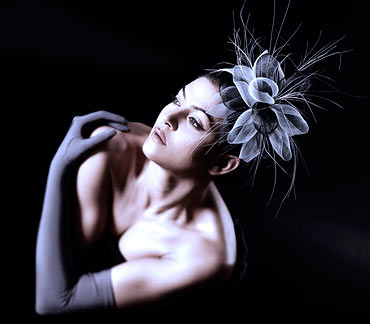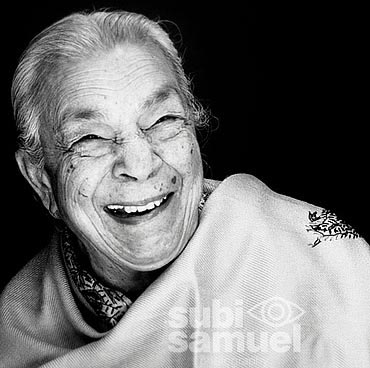 | « Back to article | Print this article |
A star once kept me waiting 11 hours: Subi Samuel
The professional photographer talks about how he overcame the odds and became one of India's leading lensmen.
On a humid afternoon in 1998, Subi Samuel stood outside a payphone booth. A huge portfolio of his work in one hand, Subi made the call he hoped would change his life.
It was a long shot. The person he was trying to reach rarely answered phone calls but he knew there was nothing to be lost in trying.
As the phone rang, his heart beating harder than ever, Subi hoped that his call wouldn't go unanswered.
After an agonising few moments, Subi finally heard the voice he was hoping to hear. Sushmita Sen answered.
About 13 years later, sitting in his studio, Subi smiles and tells you that it was divine providence. Sen is notorious for not answering her phone. What made her do so that day remains a mystery to him too.
The glamour photographer, who turns 40 in April, is a deeply religious man.
He attends Sunday mass, believes that God is watching over him and sees in his children the image of his Creator (even their names are loosely translated as 'treasured by the Lord' and 'light of the Lord'.)
His family, Subi tells me, is what anchors him. It's what keeps him sane in a world where it's easy to get blinded by arc lights and glamour. Over the last couple of years, he says he's been more of a father and husband than a photographer.
In an interview, he speaks about the challenges of breaking away from the conventional career path, waiting outside an actor's vanity van for 11 hours and shooting with Shah Rukh Khan.
'My first camera was bought out of my pocket money'
When was it you decided to be a photographer?
If you really have to look at things from the very beginning, it would have to be when I was in school.
A lot of credit for my creative skills goes to my art teacher in school, who saw the potential in me and encouraged me.
She saw my paintings and made me responsible for the school notice boards. So when the rest of my classmates would go back home by 1:30, I'd stay back thrice a week, write thoughts of the day in calligraphy and make sure the board looked good for the next day.
In exchange the teacher would buy me lunch -- chicken fried rice and Manchurian! That was the attraction for me.
I did that for four years -- from Grade Five to Grade Eight. That was where my skills were honed and I realised what I was really good at.
By the time I was in college, I had started sketching, painting landscapes and doing charcoal portraits.
At one point, while I was still in college, I stumbled upon a book on photography. I realised that photography was the translation of the kind of image I always made, but only in a different medium.
Around that time, I was also quite influenced by the work of Gautam Rajadhyaksha and other photographers who shot (glamour) images in magazines. That was when I decided I wanted to be a photographer.
Out of my pocket money, I managed to buy myself a basic SLR camera and started taking pictures of friends. Meanwhile I also started reading up books on photography. Pictures that I took started looking good. By the time I was out of college and had completed my diploma in management studies, I knew I didn't want a nine-to-five job.
'I asked my father to give me a year to prove myself'
How did your parents take to the idea of you becoming a photographer?
Err...not very well initially! I come from a very conservative, middle class family. My father runs a tyre agency. My brother, till very recently, held a regular job -- it is only now that he's decided to branch out on his own -- and so did my sister.
Back in the '90s, there weren't many photographers and the idea of starting out on your own wasn't something that many people in my family had considered. So there was obviously a good amount of opposition to the idea.
Finally, I asked my father to give me a year to prove myself. If I failed, I promised him I'd join his business.
You never studied photography nor have you gone to an art school. How did you educate yourself? And how did you get started?
Well, I largely read my way through a lot of it and learnt a lot by talking to people in the field and networking.
So by the time I started assisting Rakesh Shrestha, I knew a lot of the techniques that were being used.
How I started working for Rakesh, however, is another story in itself.
By the time I was 25, I was clear that I wanted to be a photographer. I'd flip through film magazines and see what kind of photographs were being shot by the likes of Gautam Rajadhyaksha, Jagdish Mali and their contemporaries.
Rakesh (who belongs to the same generation) was known to a neighbour of ours.
So one fine day this neighbour took me along to his studio and simply told him that I wanted to learn photography and that I'd be working with him!
Polite as he has always been, Rakesh agreed and asked me to join him the next morning at 10:30 and that was pretty much how I started working in the field.
For the next one year, I assisted him, learnt all that I could and started out on my own.
'Modern-day photography isn't just about the picture'
What were your learnings?
The thing was, because I had read a lot even before joining Rakesh, it was fascinating to see and operate equipment I'd only read about.
I learnt new shooting and lighting techniques -- it was superb hands-on experience.
I also learnt how to deal with celebrities, made contacts with editors of magazines and absorbed everything that Rakesh had to teach me.
Modern-day photography isn't just about the picture
So eventually I would learn Photoshop, 3D animation and any and every software that would help me post-production.
Today I rate myself as someone who moves into that digital space and comes up with more than just photos.
I believe one must be skilled enough to do what you want to do with your pictures. The process to me is like birthing a baby and I like to go through it rather than outsource it.
Another of my learnings has been not to get awestruck by anyone or their work. I've always been passionate about learning new things. So if I see someone's work that blows me off, I try to understand how s/he has achieved it and do it myself and hopefully better it.
It's not so much of a competitive streak as much as it is the passion to try out something new.
'Sometimes I prefer being unavailable for shoots'
How would you describe your style of photography?
I am a people's photographer. I don't take a picture with as much of an intention to make it look hot and sexy -- unless that is the brief -- as to capture the expression of the subject.
So, what translates in my pictures is not so much my skill as much as the ease I have with my subject.
You may have the same lighting and same setting but the results may vary drastically, depending upon the chemistry between the photographer and the subject.
The result of a shoot depends as much on what my subject feeds off me, as what I feed off my subject.
There are some people I relate to better than others and always do great work with them. Some others, I can't stand the sight of and prefer being unavailable for their shoots, rather than end up doing something disastrous.
Who would you say your influences have been?
I started off in the early '90s when the Internet wasn't as big as it is now. So my first influences were from magazines like Cine Blitz, Filmfare, Stardust, Star & Style and G magazine among others.
My paperwallah and I had a deal. I used to pay half the price of the magazine, flip through the photographs and return it to him before the end of the month.
So my early influences came from photographers of the time like Taiyeb Badshah, Jayesh Seth, Gautam Rajadhyaksha and of course Rakesh Shreshta, among others.
What fascinated me was how these legends played with little else other than light and clothes and created images that were so beautiful and surreal.
I hoped that someday I could do that too.
'I hate cancellations'
Is there a particular photograph that you were enamoured by?
Oh yes! The picture of Vinod Khanna and Amitabh Bachchan that Gautam Rajadhyaksha shot would be it. I don't think I can put my feelings in words, except that I remember wishing I could be the one who could've shot that photo!
Gautam is definitely one of the finest photographers of our time. We haven't produced too many photographers of his calibre. He worked at a time when there was no Photoshop and film; the medium was not as beautifully developed as it was when I was starting off.
What do you like about photography?
There is something about shooting a picture, taking it on the system and translating it in the way you like it and reproducing it. The entire journey -- from the makeup, hair and costume to conceptualising and presenting someone differently -- fascinates me. I don't smoke nor do I drink. I get my high from this.
What is it that you don't like about your job?
(Laughs) I hate it that cancellations are permitted. It's like taking a pin and deflating a balloon. The next day is never the same.
'In a single month I was famous and busy'
What would you say was your big break? The shoot or the image that defined your career?
That would be the shoot I did with Sushmita Sen. I remember calling her up one afternoon. For someone who is notorious for not answering calls, I was surprised that she did!
I introduced myself and asked her if I could come over to show her some of my pictures. She said she'd love that.
Then I dropped the bomb. I told her I was a couple of minutes away from her house and if she really wanted to, I could see her immediately. Surprisingly, she agreed!
So there I was sitting in Sushmita Sen's house, seeing her go through my portfolio. She was all praises and I took it as someone merely encouraging a newcomer.
A little hesitantly, I asked her if I could do a photoshoot with her.
She said, 'Yes we could do it tomorrow!'
So the next day Sushmita walked into my small 11 foot by 11 foot studio in Andheri (E) where I never dreamt any celebrity would set foot and we did the shoot.
The photo of her biting a pearl necklace was shot at the time. It became one of her most famous photographs.
In the same month -- I think it was February 1998 -- Star & Style carried a cover of a Shah Rukh Khan shoot I had done at Fatehpur Sikri.
It was divine providence -- that shoot was to be done by someone else who backed out at the last moment. So the magazine asked me if I could do it, because I had been knocking at their door to accept my photographs.
So suddenly, in one month, I was famous and busy!
'People see glamour, not the hard work'
What were the challenges you faced in your initial years?
It was a tough route to take. The magazines would agree to publish my photographs only if I shot a big star and the celebs would insist on knowing which magazine they'd get to see my pictures in. So it was a vicious circle.
There was a time when I waited outside a star's vanity van for over 11 hours, surviving only on occasional glasses of water.
Then there was an actress who, having met me four times, would behave like she was meeting me for the first time!
But when I look back, I see all this as part of growing up. The industry has been kind to me.
How do you stay updated?
I network and exchange ideas with a lot of foreign photographers.
They're just as interested in knowing about what we do as we're keen on knowing what they're doing.
Although I don't have a dedicated site, I spend at least 24 to 30 hours every week just researching.
I still do experimental shots with my assistants. The same thing goes for Photoshop. Whether or not I have a meeting scheduled, I'm at my studio every morning at 9:30, downloading tutorials, how-tos and picture ideas.
People see glamour. What they don't see is the labour and hard work that goes behind it.
'Partying is the last priority on everyone's list'
What is your advice to young aspiring photographers who want to make a name for themselves in the glamour industry?
- Do not get into the business because someone told you to or because you saw some Page Three pictures of a photographer partying with models.
- Do it if you have the conviction to go against all odds, can stay hungry all day and have the self belief.
- Too much is made about 'having an eye' for photography. That 'eye' will get developed, so will the so called 'skills and talent'.
- Don't believe anybody if they say they can help you. They can't. You are on your own. So be sure.
- Noone welcomes a newcomer with open arms. So be ready to slog yourself.
- This line of work is not all fun. There is a lot of labour and hard work. Anyone who is in the top five or ten will tell you how hard they slog.
- Partying is the last priority on everyone's list.
- There is a lot more to photography than taking good pictures. You have to have people skills. An actor will not come back to you just because s/he's liked the pictures you've taken, but also because of how you've treated him/her. People skills are very important.
Which is a better way for young photographers to start off -- go to photography school or assist senior photographers?
Iqbal Mohamed's Light and Life Academy in Ooty offers a one-year diploma course in photography, which is very good. I don't know of any other school that I can recommend.
Assisting reputed photographers is a good way to start your career. Getting someone to agree is a tough job though.
There are a lot of young people who come to us with the sole idea of abusing their position, or being drawn in by the glitz and the glamour rather than the business.
So educate yourself. Read up, learn, watch, be driven by passion.
'My first paycheque was Rs 6K!'
Whose work amongst your peers do you admire?
I believe amongst the current crop, Jatin Kampani is the flag-bearer of modern day photography in India.
Do you remember how much you made in your first photo sale?
Yes! It was a shoot with Chandrachud Singh and was used in Stardust. They paid me Rs 6,000 for the entire shoot. It was in 1998.
After all these years, is it a challenge to remain inspired?
No. Not really. If you're passionate about something it cannot be very difficult to stay inspired.
I am driven by photography and the idea of images. The day that passion dies out, there won't be anything left.
There was a brief stint about two years ago when I backed off for a bit and took a sabbatical. For the last few years I have been more a father and husband than a photographer.
My family is my balancing factor.
Tell us something about them.
Ours was an arranged marriage. Bina used to work at Heathrow before we got married.
My older one is a girl -- Khayla, which in Hebrew means strong, radiating light of the Lord. The younger one is a son -- Zephan, which again in Hebrew means treasured by the Lord.
How to shoot a good photograph
Finally, can you share some tips for amateur photographers on how to shoot a good photo?
- Shoot with the sun behind the model -- you will get a good halo
- Use either a flash or reflector on the face.
- Create perspectives -- depth of field, like a road. Two buildings converging. Something that helps the eyes to follow. As cliched as it might be, it always looks beautiful.
- Either keep the model in the centre or follow the rule of thirds.
- When you're setting up, make sure that the colours in the frame are in the same family.
- Don't get the model to pose. Talk to them. Get them to react and shoot those reactions.
- Shoot people in their natural settings.
- If you're shooting a portrait, shoot with a telephoto lens. It helps you to diffuse the background and focuses more attention on the subject.

